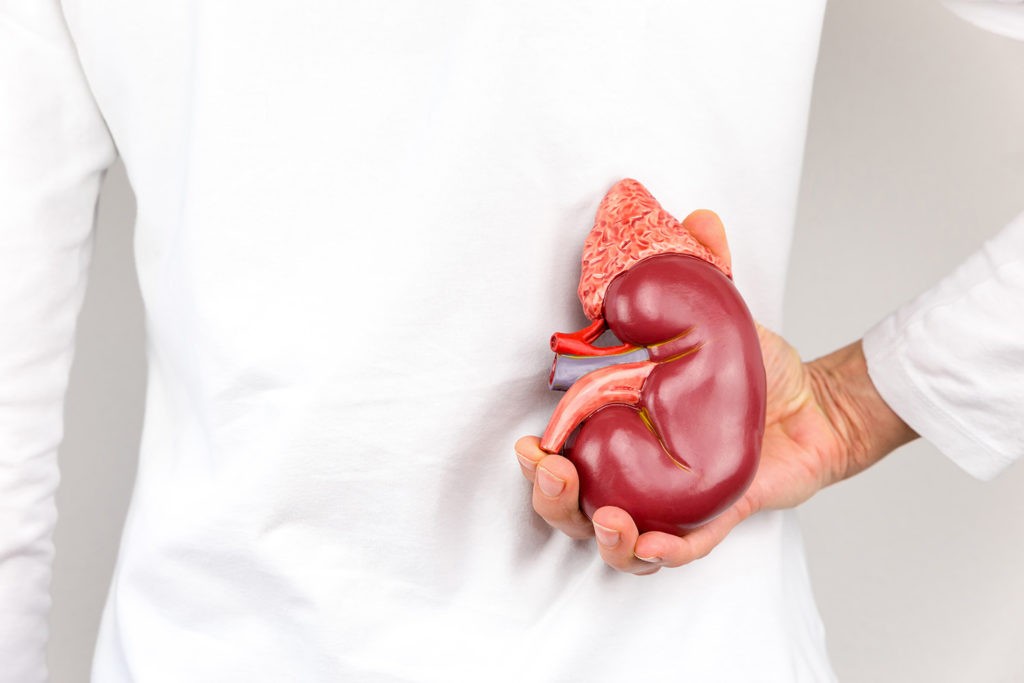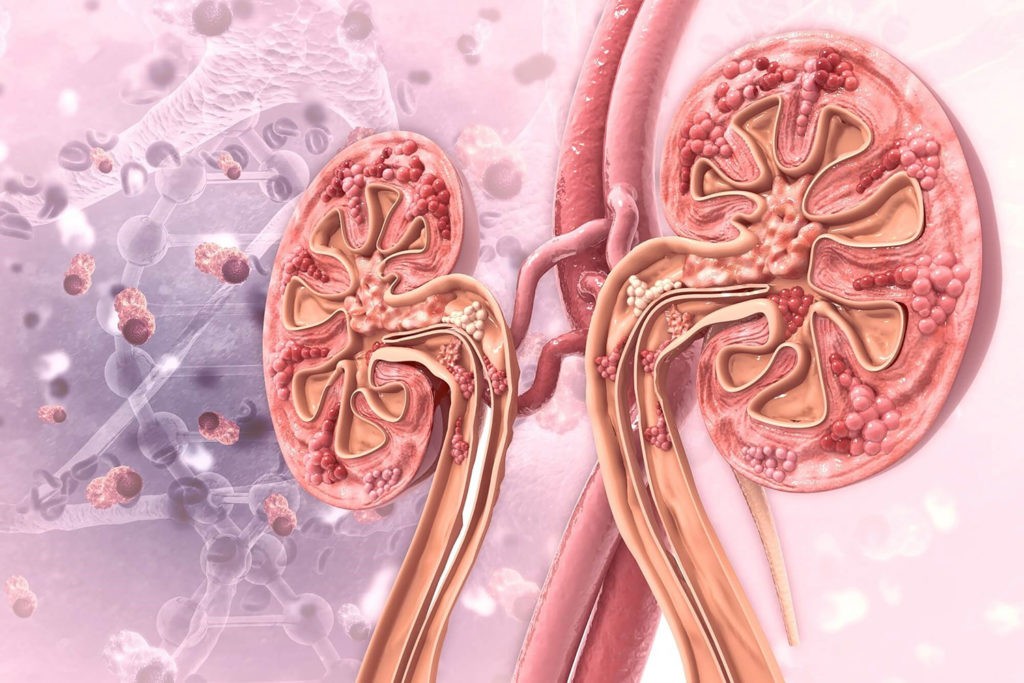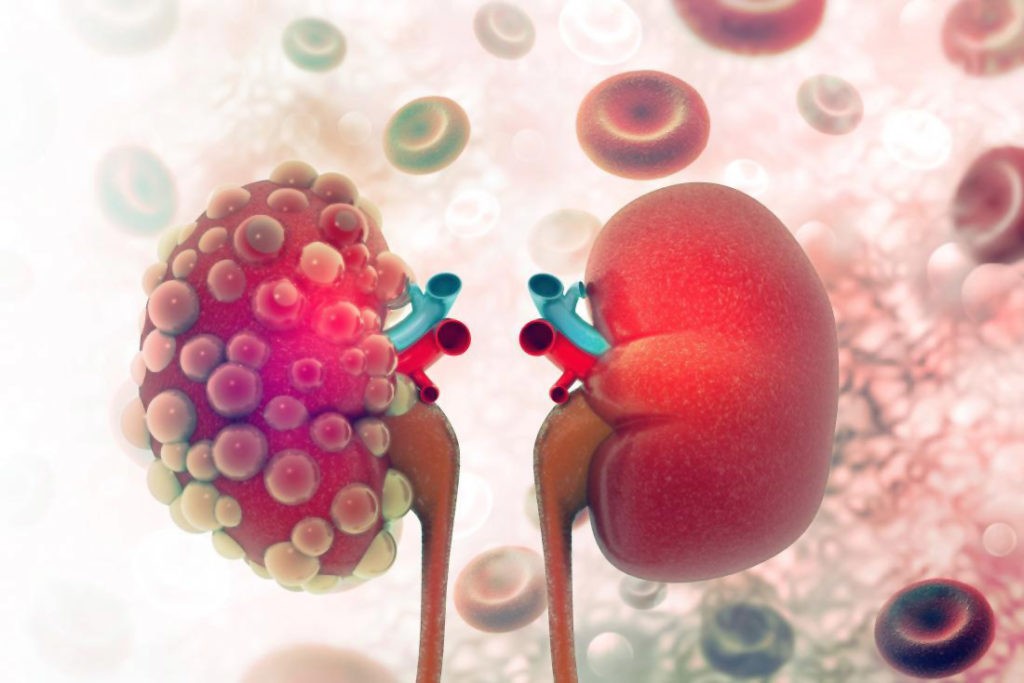National Kidney Foundation

Are You the 33?
1 in 3 American adults are at risk of life-threatening kidney disease. Most don’t know it.
Right now, 37 million Americans have kidney disease and yet, 9 out of 10 don’t know it. There are often no symptoms of kidney disease, and those with kidney disease won’t find out until their kidneys fail. Our kidneys are vital organs that are as important as your heart, liver, or lungs. No one can live without functioning kidneys. When kidneys fail, only immediate dialysis or a transplant can save you.

WHO IS AT HIGH RISK?
If you have one of these five risk factors, you are at risk for kidney disease:
▪ High blood pressure is a major cause of kidney disease. High blood pressure can be controlled with healthy lifestyle choices and medicines.
▪ Your heart and kidneys work together to keep you healthy. So, if you have heart disease, then your kidneys will be affected. And if you have kidney disease, your heart will be affected. Along with a healthy lifestyle, there are treatments for heart disease you should discuss with your doctor.
▪ Diabetes is a major cause of kidney disease and can be controlled with healthy lifestyle choices and medicines.
▪ If you’re overweight or obese, you have a greater chance of developing diabetes or high blood pressure, which are the leading causes of kidney disease and kidney failure. Being overweight or obese can also harm your kidneys directly.
▪ People with a family history of kidney disease are 2-to-3 times more likely to get kidney disease or kidney failure. Discuss family history with your doctorIf you or a family member have one or more of these factors, go to MinuteForYourKidneys.org right now and find out what to do next and how to talk to your doctor.
“Life-threatening kidney disease can strike anyone, young or old, and has many causes. Early intervention can make a difference. Lifestyle changes including exercise, a healthy diet, and smoking cessation can sometimes slow the progression of the disease when caught in the early stages, and sometimes can stop kidney failure” says Christine Corbett DNP, APRN, FNP-BC, CNN-NP, FNKF, local nephrology nurse practitioner.
TWO SIMPLE STEPS
The first step to preventing kidney failure is knowing your risk. With one minute to spare, go to MinuteForYourKidneys.org and understand your risk for developing kidney disease. When was the last time a minute held so much value?
The second step is to get tested. Two simple tests, one blood and one urine, can let your doctor know how your kidneys are doing. A blood test shows how well the kidneys are working, and a urine test shows if the kidneys are leaking too much protein. When the kidneys leak too much protein, you may have kidney damage.

RACE, ETHNICITY AND KIDNEY DISEASE
If you are African American, Hispanic, Asian American, Pacific Islanders, Native American, or an Alaska Native, you may be at an increased risk for kidney disease. African Americans are 3 times more likely and Hispanics are 1½ times more likely to have kidney failure compared to White Americans.
Researchers do not fully understand why minorities are at a higher risk for kidney disease. However, minorities have much higher rates of high blood pressure, diabetes, obesity and heart disease, all of which increase the risk for kidney disease. Access to healthcare may also play a role.
WHY ARE MINORITIES AT GREATER RISK FOR KIDNEY DISEASE
Some minorities are more likely to have diabetes as compared to White Americans. Having diabetes can lead to kidney disease and kidney failure.
High blood pressure is also a serious problem for minorities. High blood pressure strikes 1 out of 3 African Americans, one of the highest rates in the world. Nearly 1 in 4 Hispanics has high blood pressure and most do not know that high blood pressure can cause kidney disease.
HOW DOES HEALTHCARE ACCESS PLAY A ROLE?
Minorities may have less access to healthcare than other Americans. For example, nearly 2 out of 5 Hispanics, 1 out of 4 African Americans, and 1 out of 3 Native Americans and Alaska Natives are uninsured.
Many minorities do not even know they have kidney disease until it’s in the latest stages. By then it is too late to slow or stop the kidney damage from getting worse.

7 GOLDEN RULES
Prevention to lower your chances of getting kidney disease.
- Get Regular Check-Ups: You take your car in for a tune-up to make sure it runs smoothly, so why wouldn’t you take care of your body? Your doctor can check for kidney disease with 2 simple tests: a urine test and blood test. A urine test called albumin creatinine ratio (ACR) checks if there is a protein called albumin in your urine. A blood test called glomerular filtration rate (GFR) tells how well your kidneys are working to remove waste from your body.
- Control Blood Pressure: High blood pressure can damage your kidneys and increase your chances of getting kidney disease. If your blood pressure remains high, your doctor may have you take medicine. Making simple tweaks to your lifestyle, such as cutting back on salt and alcohol, losing excess weight, and exercising can help keep your blood pressure in check.
- Manage Blood Sugar: Blood sugar levels can be influenced by several factors, including those out of a person’s control such as hormones, illness, or stress. Over time, high blood sugar levels can cause blood vessels inside the kidney to become narrow and clogged and can cause damage to the blood vessels and harm the kidneys. If you have diabetes, the best way to protect your kidneys is to positively influence your blood sugar levels as best you can. Your treatment plan may include changes to your diet, exercise, and medicine to lower your blood sugar levels.
- Eat a Healthy Diet: A healthy diet plan, such as the Mediterranean Diet and the DASH (Dietary Approaches to Stop Hypertension) Diet, can help lower blood pressure and blood lipids (fat in the blood). These eating plans include fresh fruits and vegetables, fat-free or low-fat milk and milk products, whole grains, fish, poultry, beans, seeds, and nuts. They also have less sodium, sugars, fats, and red meats.
- Exercise: You’ve heard if before and we’re going to say it again: you must exercise. Exercise can help you keep a healthy weight, control blood pressure and cholesterol, build strength and endurance, and lower your chances of getting diseases such as diabetes, heart disease, and kidney disease. There are many types of exercises that can help you stay healthy including walking, household chores, playing a sport, or aerobic exercise (jogging, swimming, biking, climbing stairs, or hiking).
- Quit Smoking: By now you should know the many dangers associated with smoking. Smoking causes diseases in every organ of the body, including the kidneys. If you are not able to quit smoking on your own, ask your doctor about treatment options.
- Do Not Overuse Pain Medicines: Using too much pain medicines called NSAIDs (non-steroidal anti-inflammatory drugs such as ibuprofen) may cause kidney disease. Long-term use of NSAIDs, especially at high doses, reduces the blood flow to the kidney which causes harm to kidney tissue. Ask your doctor about other medicine to manage pain, such as acetaminophen.
UPCOMING EVENTS
Magic of Giving Gala
Thursday, August 6, 2020, 5 p.m. to 9 p.m.
For more information and purchase tickets kidneywalk.org/MagicOfGivingKC
Kidney Walk
Saturday, September 26, 2020 | Berkley Riverfront Park, 5 p.m.
To sign up or for more information kidneywalk.org
More information about kidney healthy can be found on kidney.org and and kidney.org/spanish




